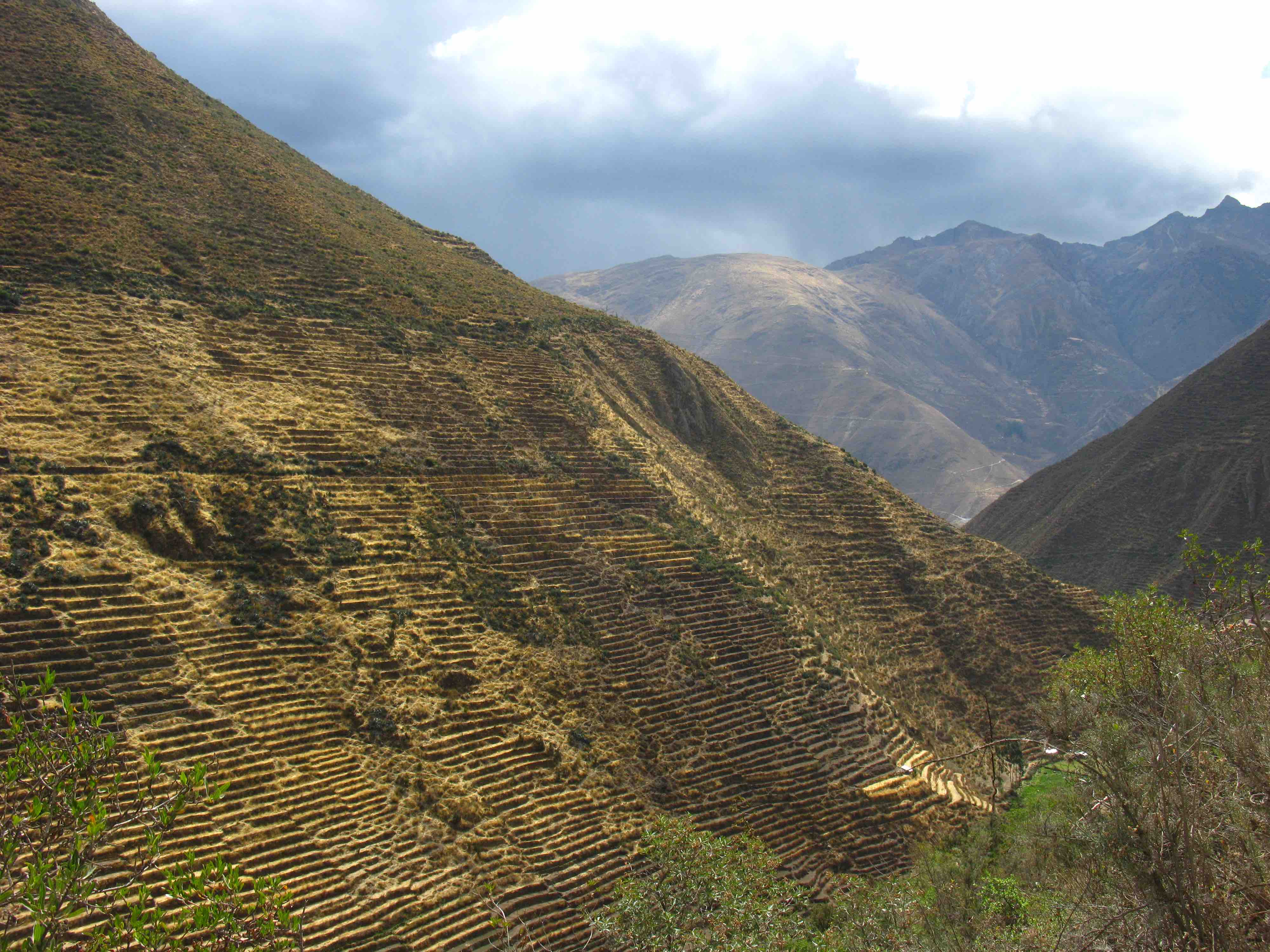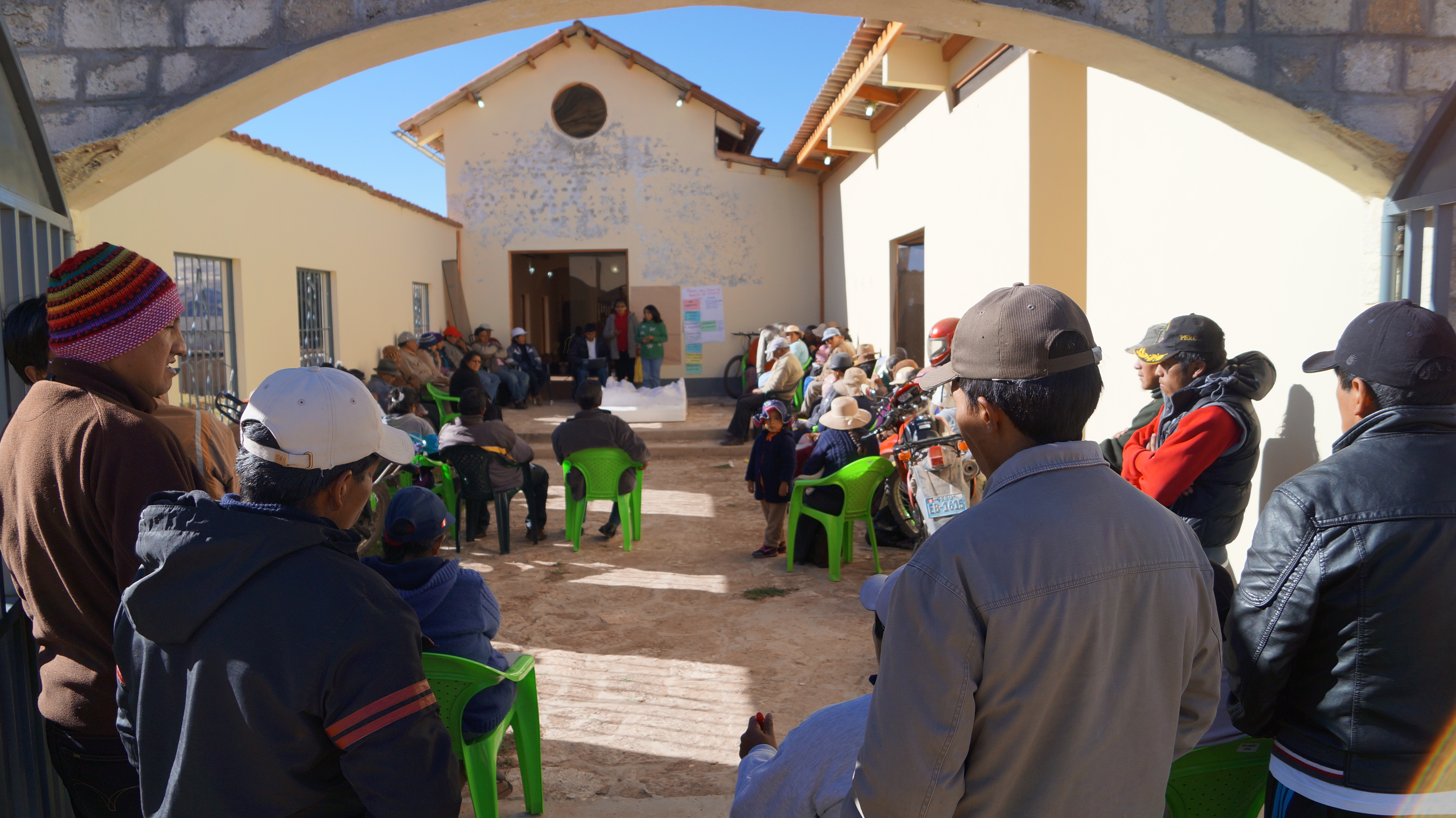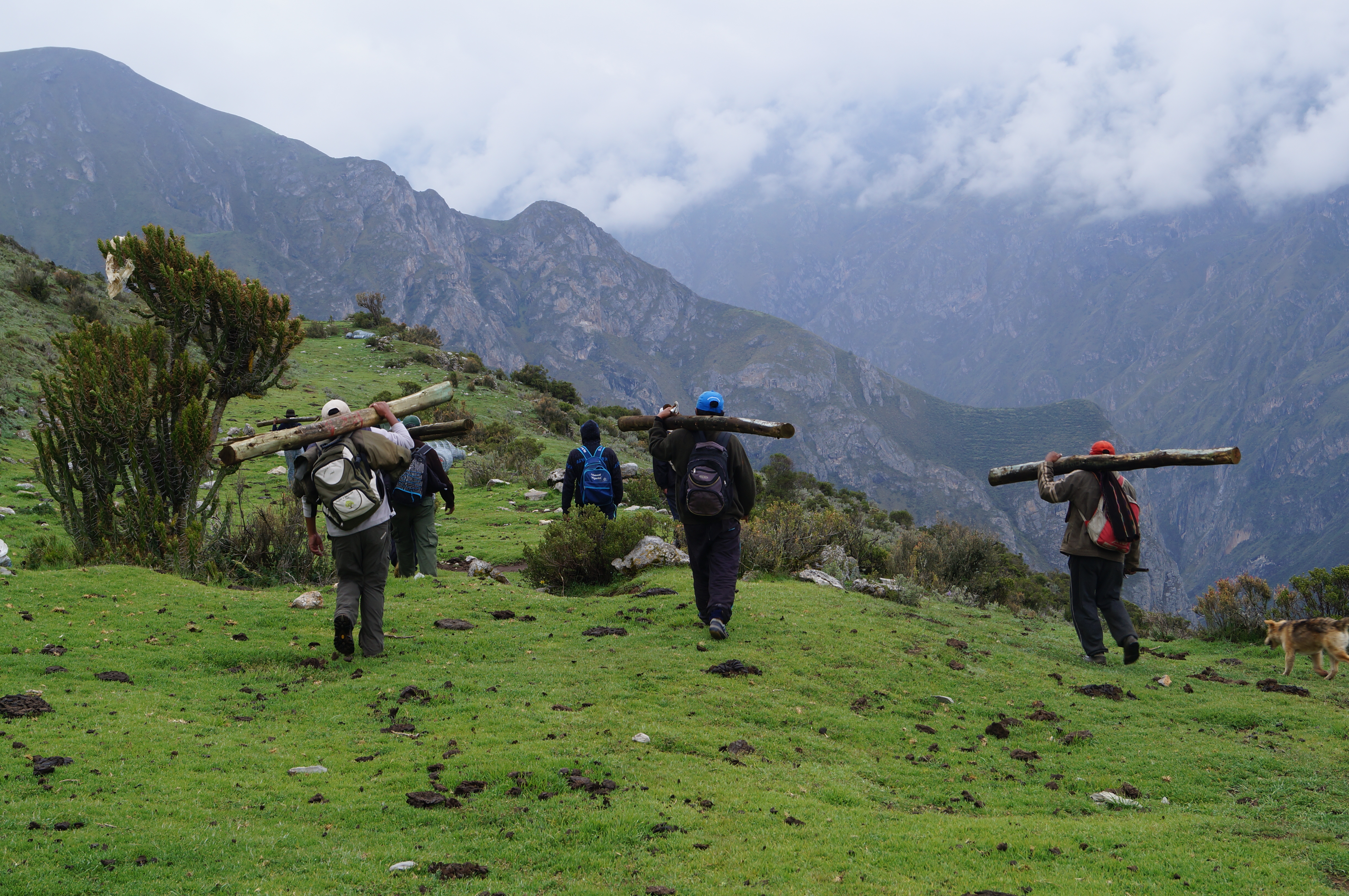Ancestral Technologies & Climate Change
Ancestral Technologies and Climate Change
PERUVIAN ANDES: Our project combined modern science with traditional knowledge to restore wetlands, peatlands and grasslands of the puna ecosystems in the central Andes. Mountain communities needed to make their local source of water more secure as climate change and other factors threatened to dry and degrade high mountain grasslands and wetlands. We partnered with the families of Canchayllo and Miraflores (Nor Yauyos Cochas Landscape Reserve) to repair and restore reservoirs, irrigation canals and other water regulating systems originally built by their ancestors as far back as 1,000 AD. Reviving their ancestral technologies has improved the availability of local water and has increased livestock productivity. This, in turn, has lead to greater food security and economic benefits. The richness and abundance of biodiversity has also improved in the surrounding ecosystem, helping to make the puna, and all who rely on it, more resilient to climate change. Based on the success of this project, we are replicating it in the Ancash region of Peru and in other mountain sites. This project won the 2017 Solution Search “Farming for Biodiversity” Contest in the category of “Water Impact.” An initiative based on this project has been awarded the 2018 St. Andrews Prize for the Environment. Related press coverage is here.
-
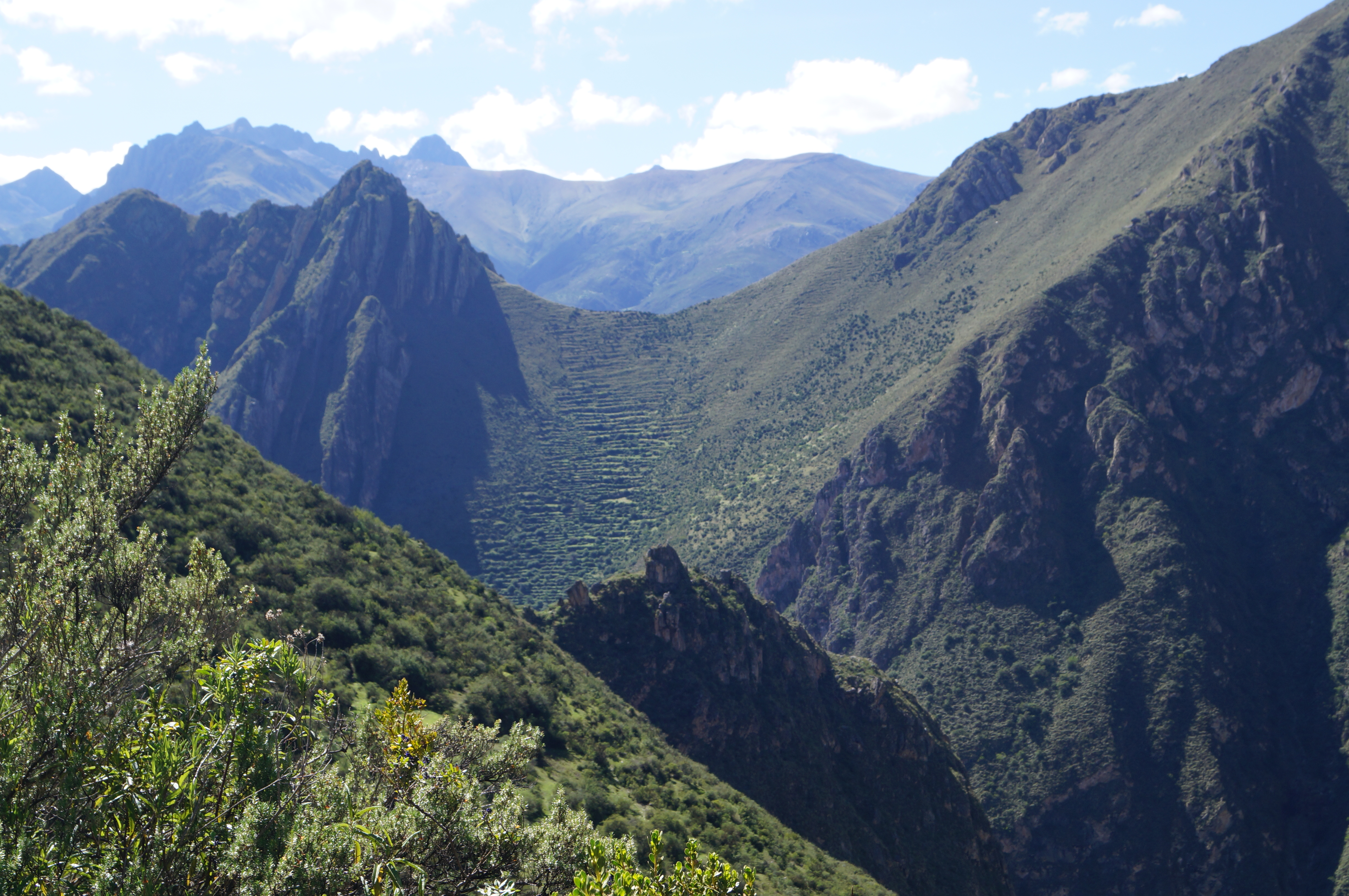
Project Site
Our initiative focuses on two communities in the high Andes of Peru: Canchayllo (230 families) and Miraflores (80 families), located in the Nor Yauyos Cochas Landscape Reserve. Their livelihoods, food and water security depend on alpine grasslands and wetlands known as the Puna. Given threats from climate change, a healthy puna ecosystem is more important than ever since it plays a critical role in capturing, storing, and regulating mountain water. The communities we partnered with raise sheep, cattle and alpaca. They also grow several different crops and manage wild vicuña for their highly valuable wool. The puna is essential to locals’ well being and to the unique wildlife adapted to the puna, including the locally endangered vicuña.
Pre-Incan civilizations–the ancestors of these communities–began colonizing the puna around 100 B.C. By the year 1,000 AD, the original cultures had engineered puna ecosystems with silt dams, water reservoirs and canals to expand wetlands and improve grasslands. These ancestral technologies were designed to slow the movement of water through grasses and soils. When these technologies were fully employed, the puna retained more water locally, allowed biodiversity to flourish, buffered against flooding and drought, and provided fodder for sustainable sources of meat, cheese, and manure. These ancient societies cultivated thousands of native potato, corn, tuber, and hard grain varieties with water secured in the surrounding puna.
-
Problem
The puna ecosystem surrounding our project sites has degraded over time due to glacier retreat, changes in precipitation, and shifts away from traditional ways of farming, herding and managing water. For the most part, the infrastructure and technologies engineered centuries ago have been abandoned or neglected in this area. In Canchayllo and Miraflores, farmers identified both changes in climate and changes to traditional practices as serious threats to the puna. In recent years, drying puna wetlands have forced farmers to concentrate their herds in remaining wet areas, with few options for rotating pastures for grazing. These farmers are well aware that in the absence of solutions, puna habitat will continue to degrade, the condition of their livestock will worsen, and the ecosystem itself will eventually collapse. Pastoralist livelihoods and unique mountain biodiversity are at risk if local communities don’t find a way to adapt.
-
Our Approach
Farmers in Canchayllo and Miraflores convened community assemblies and met with experts from Instituto de Montaña and our partners. IdM trained local researchers who worked with external specialists during diagnostic field trips and brainstorming sessions. This group identified restoring the pre-Incan water management systems in the area as the best solution. This ancient technology irrigated grasslands by capturing rainwater in canals and reservoirs and dispersing it across these grasslands, improving soil moisture, vegetation cover and composition, and also replenishing aquifers and springs.
-
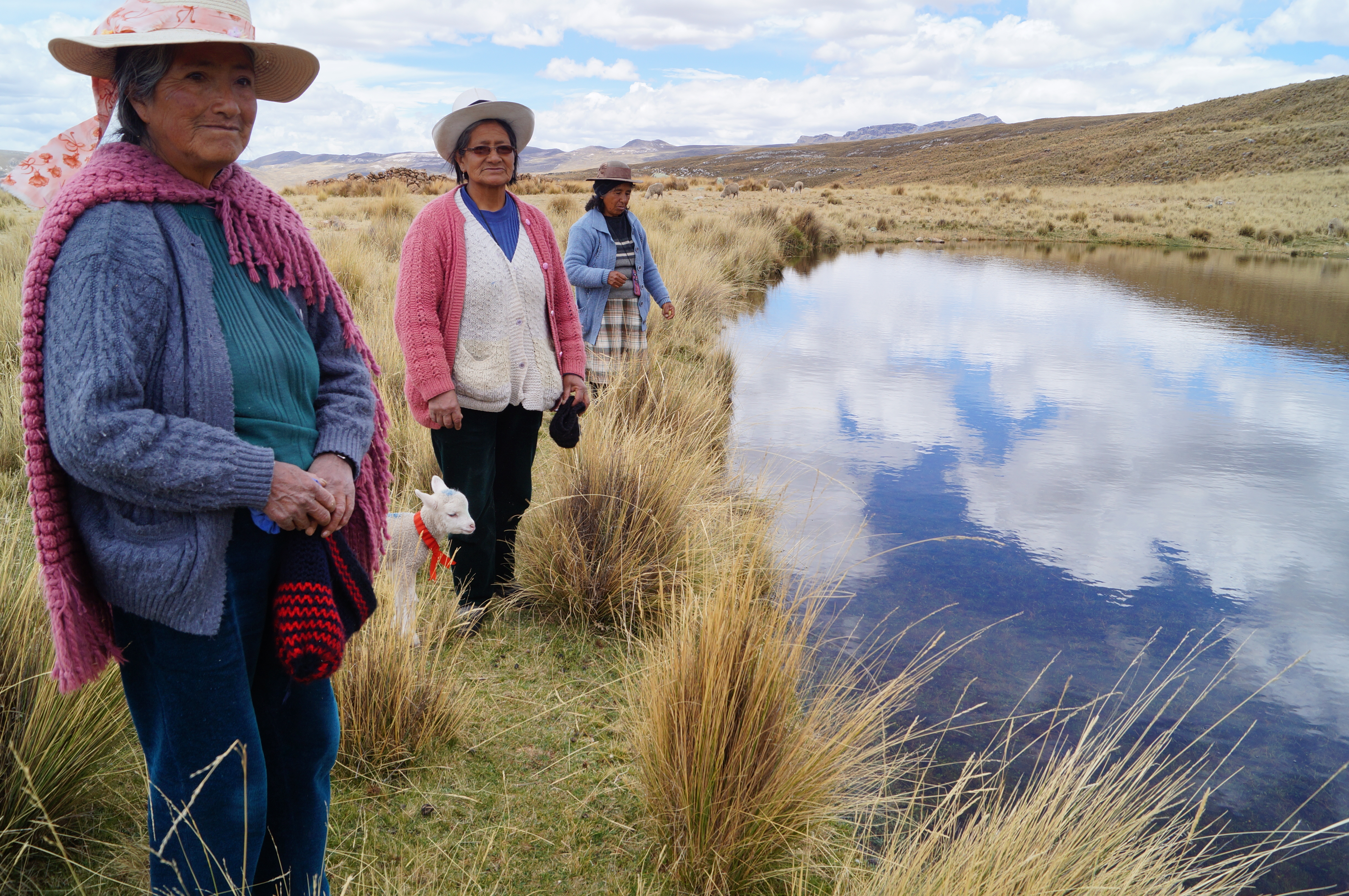
Solutions
Our initiative has helped locals repair and restore existing reservoirs, irrigation canals and other water regulating systems originally built by their ancestors. Infrastructure solutions were adapted from ancient technologies and co-designed by community research groups and external scientists. The process was inclusive, participatory and focused on both solutions and ecological sustainability. The restoration design relied on community members’ intimate knowledge of the social and bio-physical contexts of the puna ecosystem. For example, the use of PVC was proposed by local researchers as a material that would withstand the humid conditions of the puna with relatively little maintenance. The refurbished water management system is a hybrid solution of grey (constructed) and green (from nature) technologies that make the most of ancient and modern engineering. Our solution was readily adopted by the community because it directly addressed a high-priority, self-identified community concern. Community management plans for caring for the revitalized ecosystem were developed simultaneously.
-
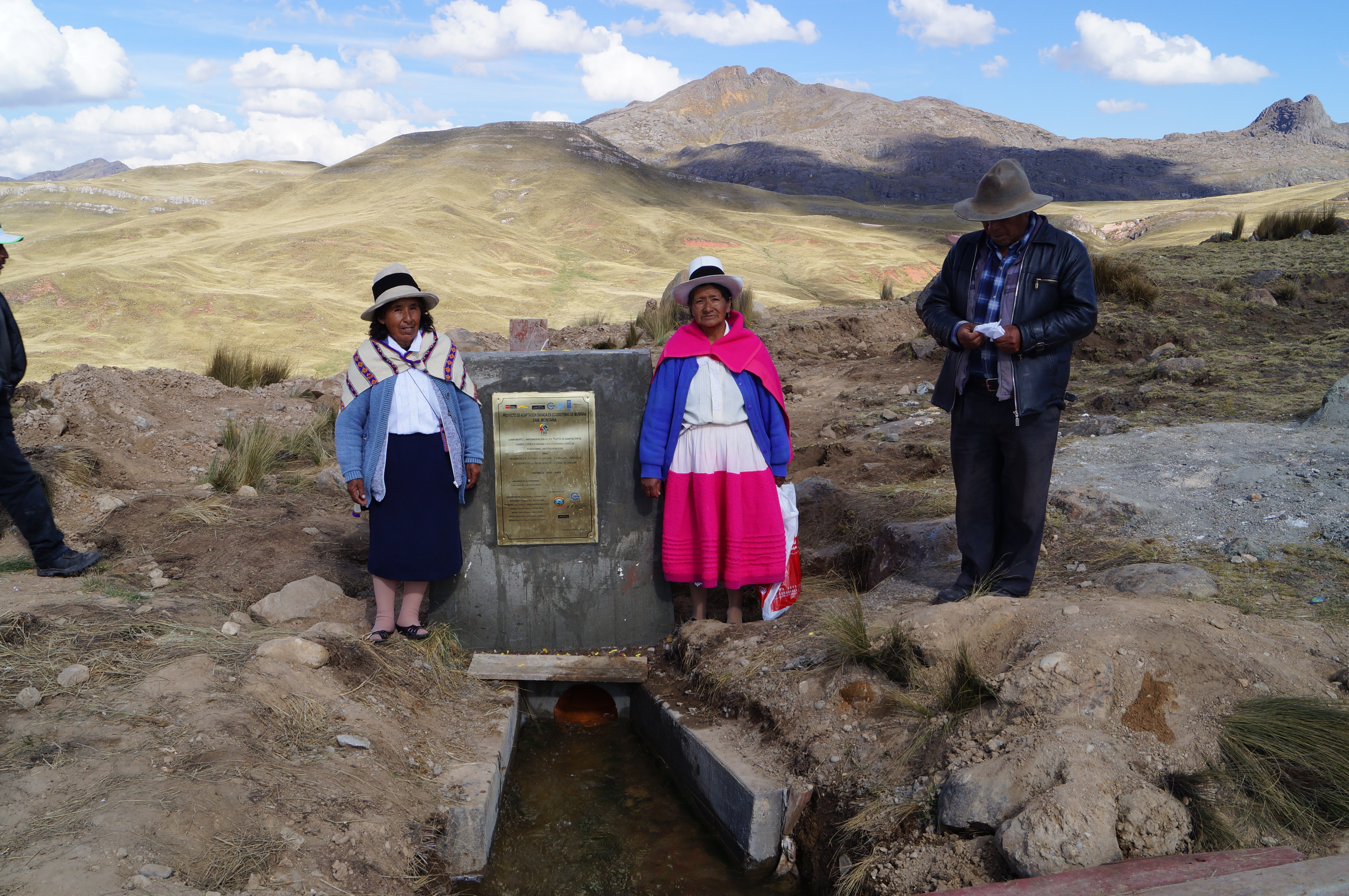
Results
By restoring ancestral technologies, we have helped to revive the puna ecosystem, benefitting humans and wildlife alike. Availability of local water has increased, especially in the dry season, leading to a boost in livestock and crop productivity. This, in turn has brought greater food security and economic benefits to the communities of Canchayllo and Miraflores. The richness and abundance of native plants and wildlife have also improved in the surrounding ecosystem, making the puna, and all who rely on it, more resilient to climate change. Our key to success was the active participation of local stakeholders in all steps of the project design and implementation. This resulted in increased ownership, improved confidence to apply local knowledge, and concrete implementation of a solution that benefited the entire community.
Understanding and navigating the deeper layers of power structures within a community can be extremely difficult. A poor understanding of this context can easily create distrust and derail implementation of solutions that involve collective resources and actions. We built trust within the community by empowering local research groups, respecting local authorities, and encouraging them to resolve any emerging conflicts over access and use of water and grasslands.
Related press coverage here.
-

